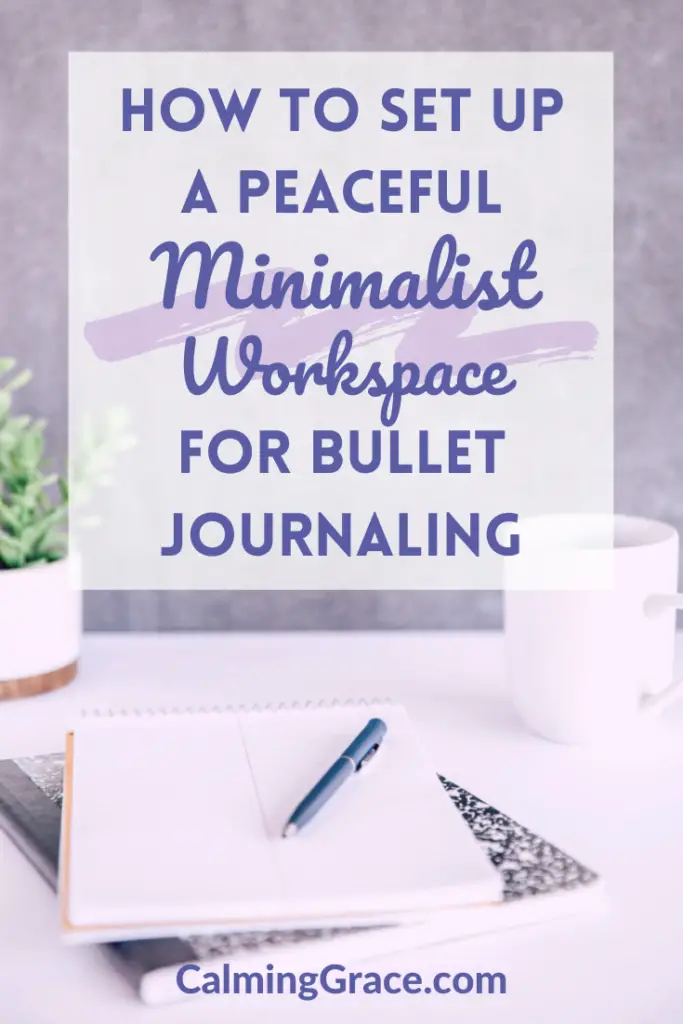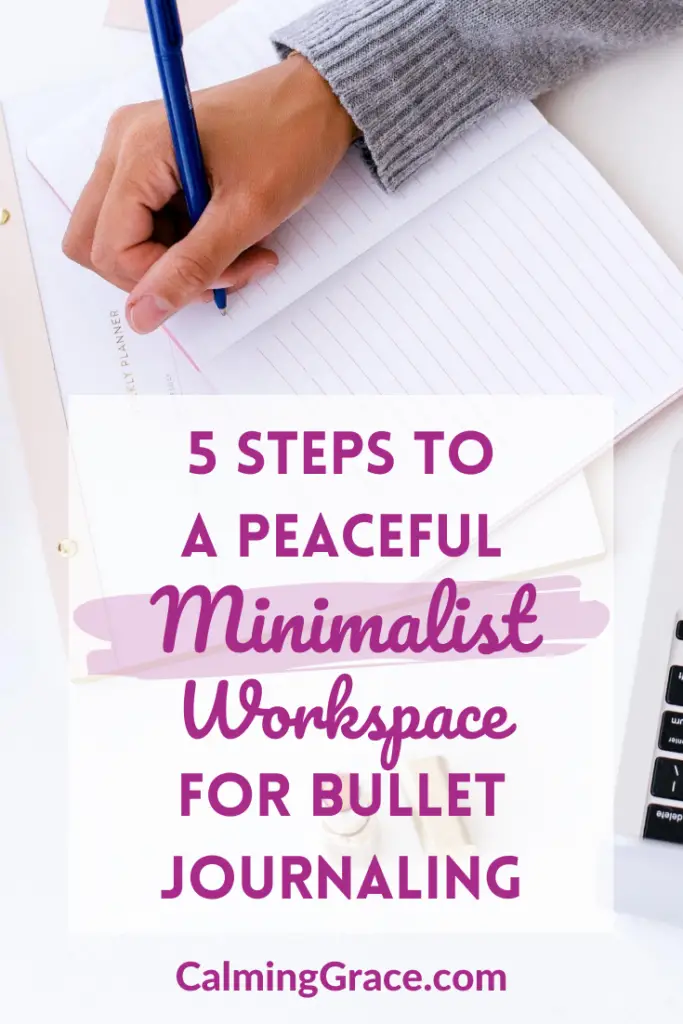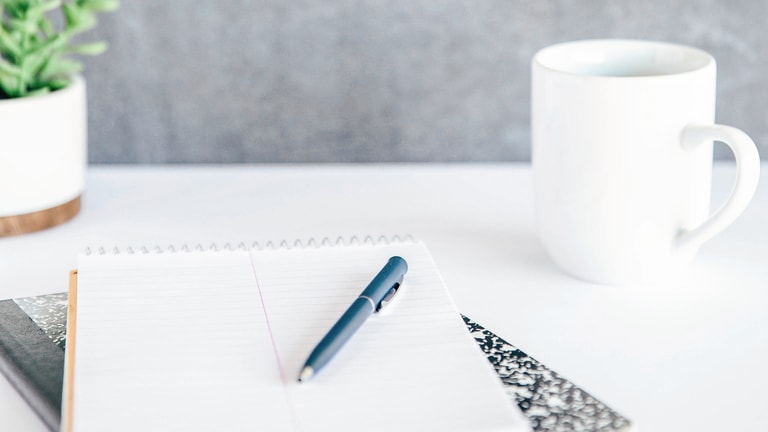Last Updated: September 5, 2024
“Have nothing in your house that you do not know to be useful, or believe to be beautiful.” – William Morris, 19th century British designer and writer
While I’m not the master at following this minimalist aphorism in every area of my apartment, I do find it useful in thinking about what I really need to have in my Bullet Journaling workspace.
Having a “less is more” perspective helps me to relax when I sit down to do some Bullet Journaling. Eliminating distractions makes it easier to focus on the present moment.
I use Bullet Journal supplies as examples, but these 5 steps are applicable to anyone who wants a peaceful minimalist workspace.
This article contains affiliate links. As an Amazon Associate I earn from qualifying purchases. If you buy something using the links, I may earn a commission at no extra cost to you. Read the full affiliate disclosure.
1. Identify the Essentials
The first and most important step is to figure out what you really need. You don’t need much in your minimalist Bullet Journaling workspace: your journal, your pens, and perhaps a ruler for drawing straight lines. You can decide whether embellishments like washi tape and scissors, highlighters or markers, and other decorative papers are essential for you.
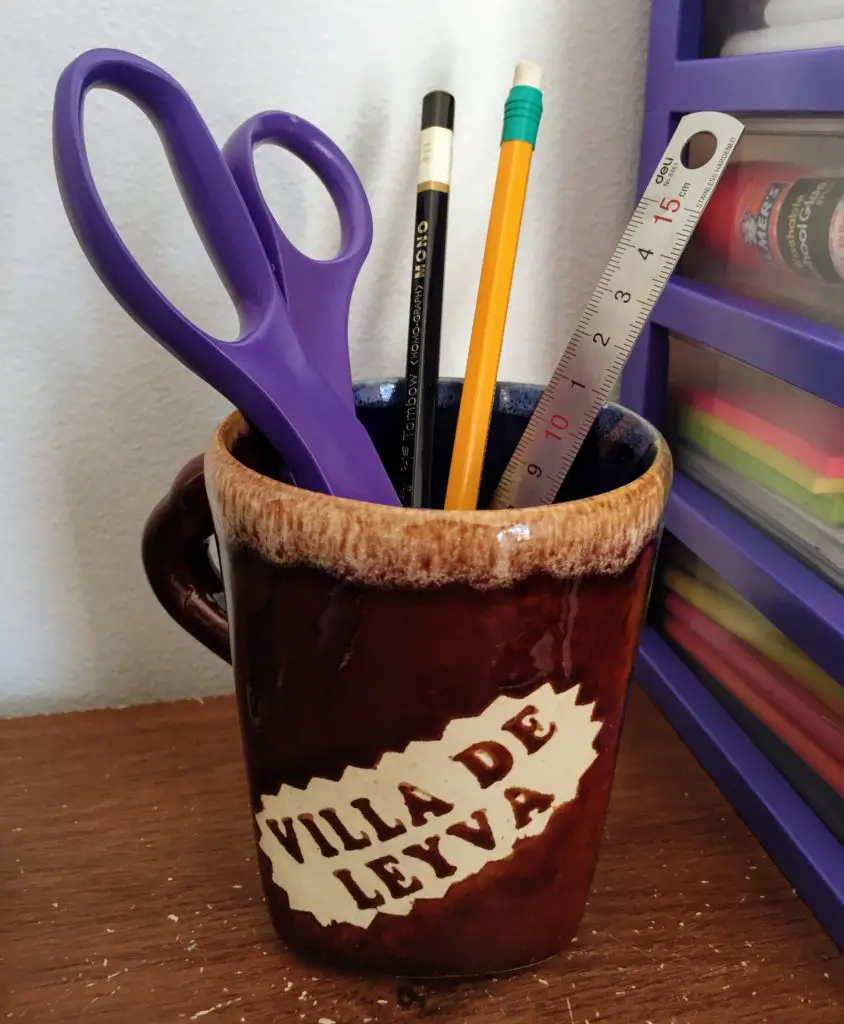
2. Eliminate the Rest
Once you’ve decided what you really need, get rid of everything else! Old pens that don’t work anymore? Throw them away! Too many markers or colored pencils? Donate them to a school or other children’s charity. Something ugly? Get rid of it, or find another place for it – never have something you can’t stand looking at on your desk! Too much paper lying around? Set it aside until you find a use for it.
I’m not advocating for just throwing away everything you don’t need, because it’s wasteful to put things that can still be used in the trash. But your workspace should be peaceful and practical. If you don’t use something often, it’s clutter. Find another place for it and another use for it later.
3. Make Frequently Used Items Easy to Access
Now that you’re left with only the supplies that you actually need, it’s time to start organizing. Think about which items you use most often, and put them in an easy to reach place.
I’m a big fan of simply laying out the pens and markers that I use every day on my desk, so all I have to do is grab the one I want. No rummaging through boxes or drawers to find what I need. Also, I like to leave my Bullet Journal on the side of my desk at all times, so that I can easily write something in it when I need to.
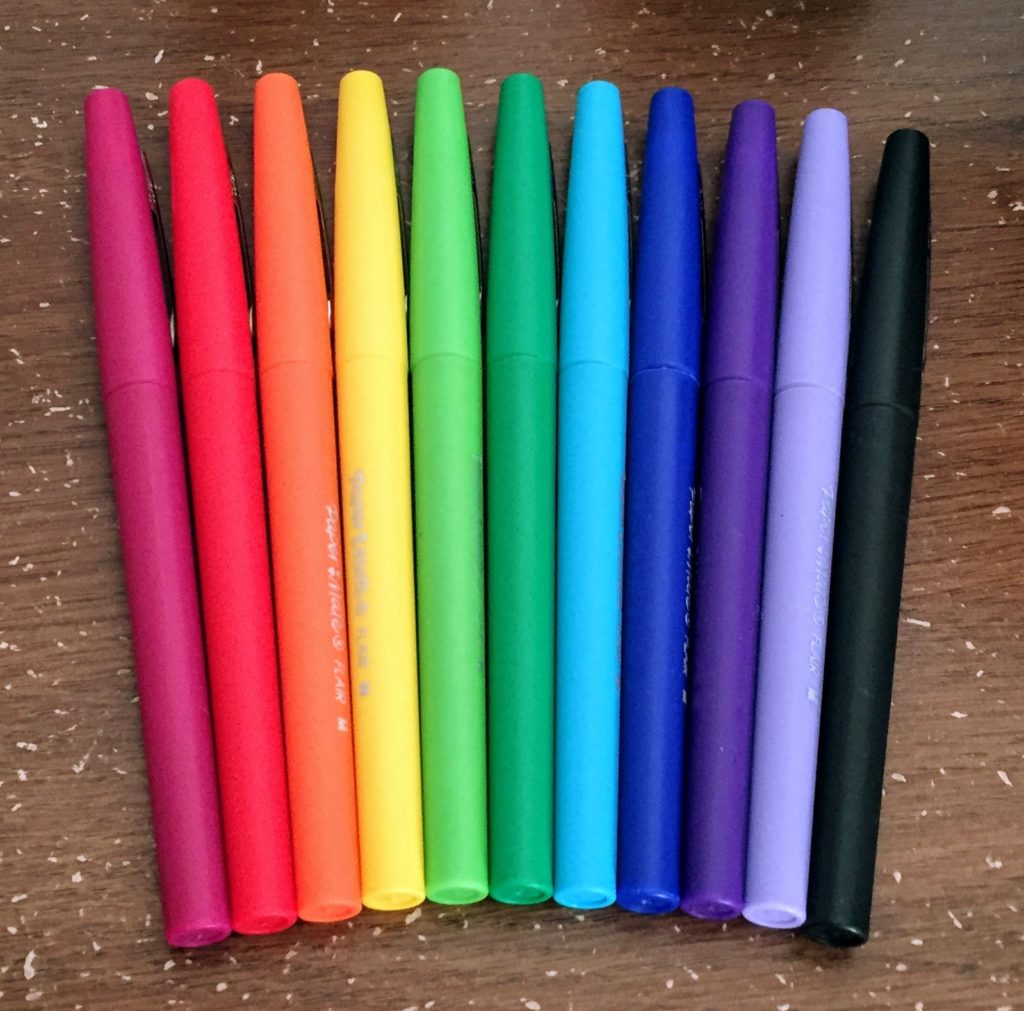
Read More: How to Start a Bullet Journal: Complete Setup Guide
4. Simplify Organization
Maybe you still have items you don’t use every day, but you identified as essential, and you’re running out of room on your desk. So, look for simple ways to organize them. There’s no need to create complicated organizational systems. Think about re-purposing things like shoe boxes or other small boxes, plastic containers, candle holders, mugs, or vases.
I use two glass candle holders for my washi tape because that’s all the washi tape I have. I also have a cute 4-drawer desk organizer that I’ve had since I was a kid, and in those drawers I stick things that I don’t use every day, but still want to keep handy: colored pencils, glue, post-it notes, etc.
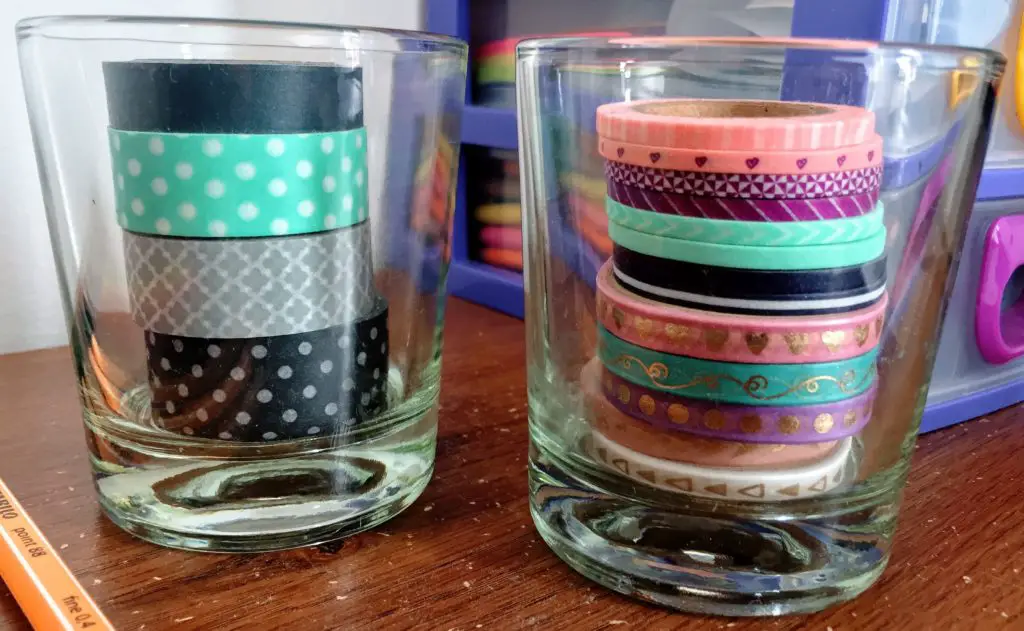
5. Add Personal Touches
Now that your supplies are organized, it’s time to make your Bullet Journaling workspace a beautiful and personal place where you enjoy spending your time. Add some trinkets and decorations that make the space uniquely yours! These things will help you relax when you settle in to do some journaling.
Read More: 5 Journaling Methods to Help You Calm Your Mind
A Tour of My Bullet Journaling Workspace
After putting these steps into practice myself, here is a brief tour of my minimalist workspace.
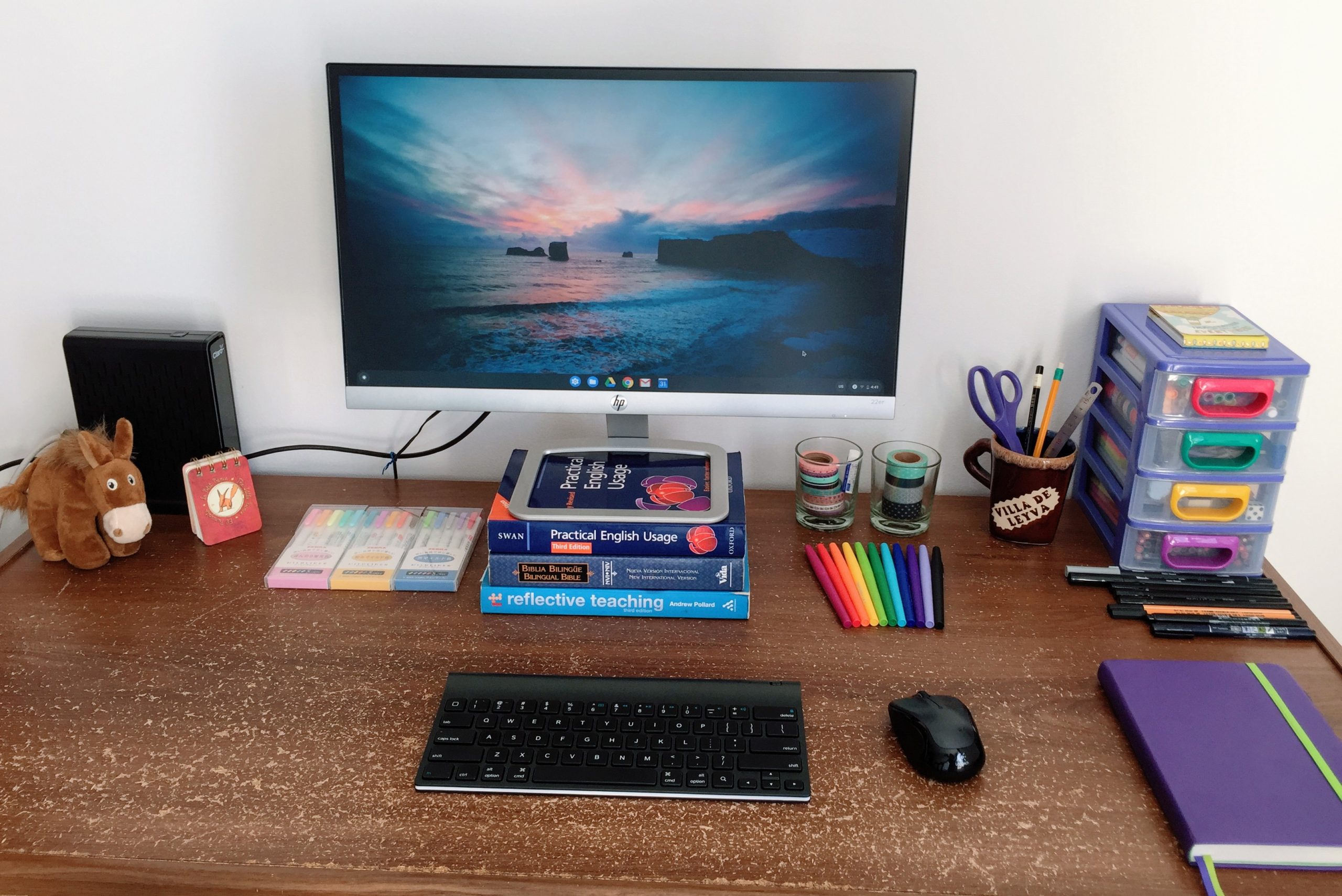
The Bullet Journaling Essentials
Bullet Journaling tool #1: The journal itself. I always leave it on the side of the desk so that I can make a quick note or update whenever I need to. Above that, I have the black pens and markers that I use often. Next to those, my washi tape, colored pens, and drafting tools are easy to access. Finally, I keep my collection of Zebra Mildliner highlighters within reach on the other side of the desk.
Read More: 10 Signs You Should Use a Bullet Journal for Mental Clarity
The Digital Essentials
The desk is dominated by a computer screen. Buying this external monitor was one of the best decisions my husband and I could have made when setting up our home office. The screen is more than twice the size of my laptop screen, so it minimizes eye strain and makes everything easier to operate.
I simply plug the HDMI cable into my laptop, and then use an external Bluetooth mouse and keyboard to navigate as usual. We use some reference books to raise the monitor up to eye level. Finally, the WiFi router is situated on the corner of the desk.
The Personal Touches
No workspace is complete without a couple of finishing touches. A souvenir mug from Villa de Leyva, Colombia holds my scissors, pencils, and straightedge. I also have a couple of cute little notepads that were given to me by friends. It’s also fun to have the little stuffed animal “Conchita” donkey (from Juan Valdez Café) that my husband gave me back when we first started dating. These items help me feel peaceful and, essentially, “myself” when I sit down at my desk.
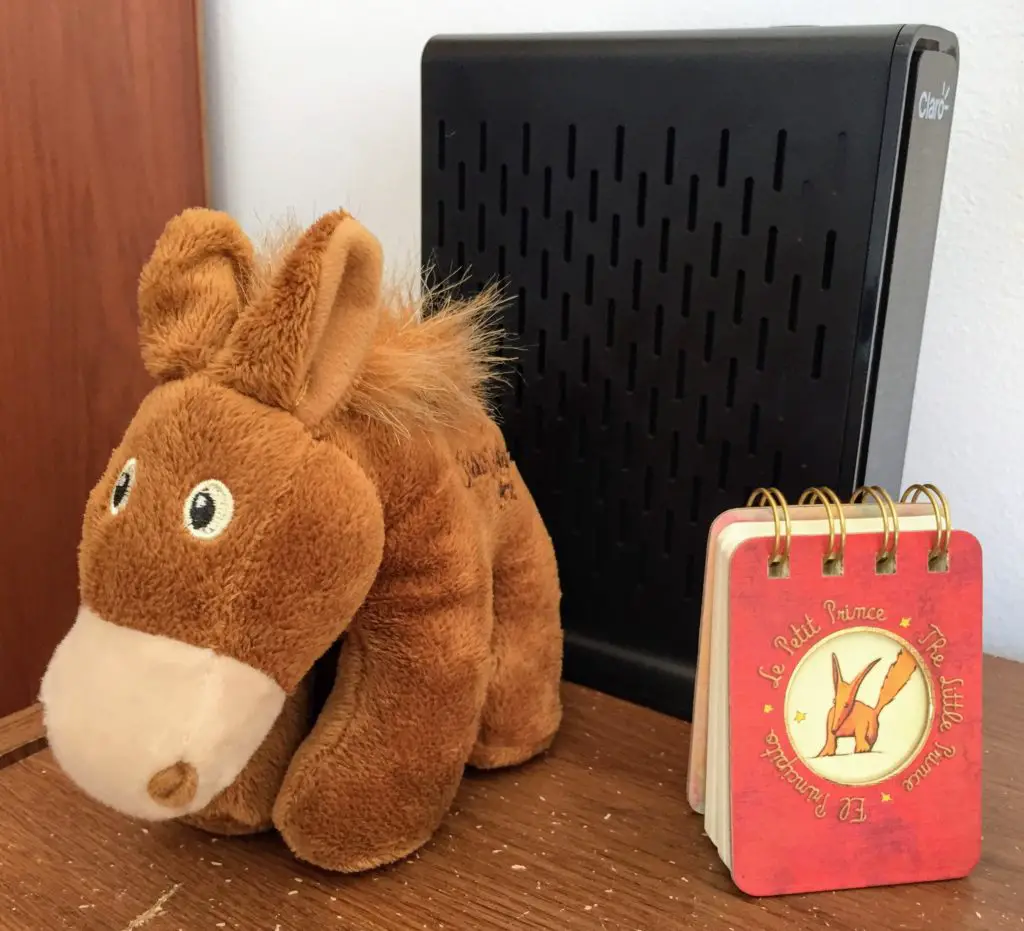
Peace and Calm in Your Bullet Journaling Workspace
Minimalism doesn’t have to mean a completely bare, empty space. These 5 steps aim to help you identify what you really need, and clear your Bullet Journaling workspace of any unnecessary items, which can turn into distractions when you’re trying to focus.
In my own workspace, there are probably some ways I could minimize and cut down even more, but I’ve left it like this because it makes me feel at peace: I’m surrounded by things that I find both useful and beautiful.
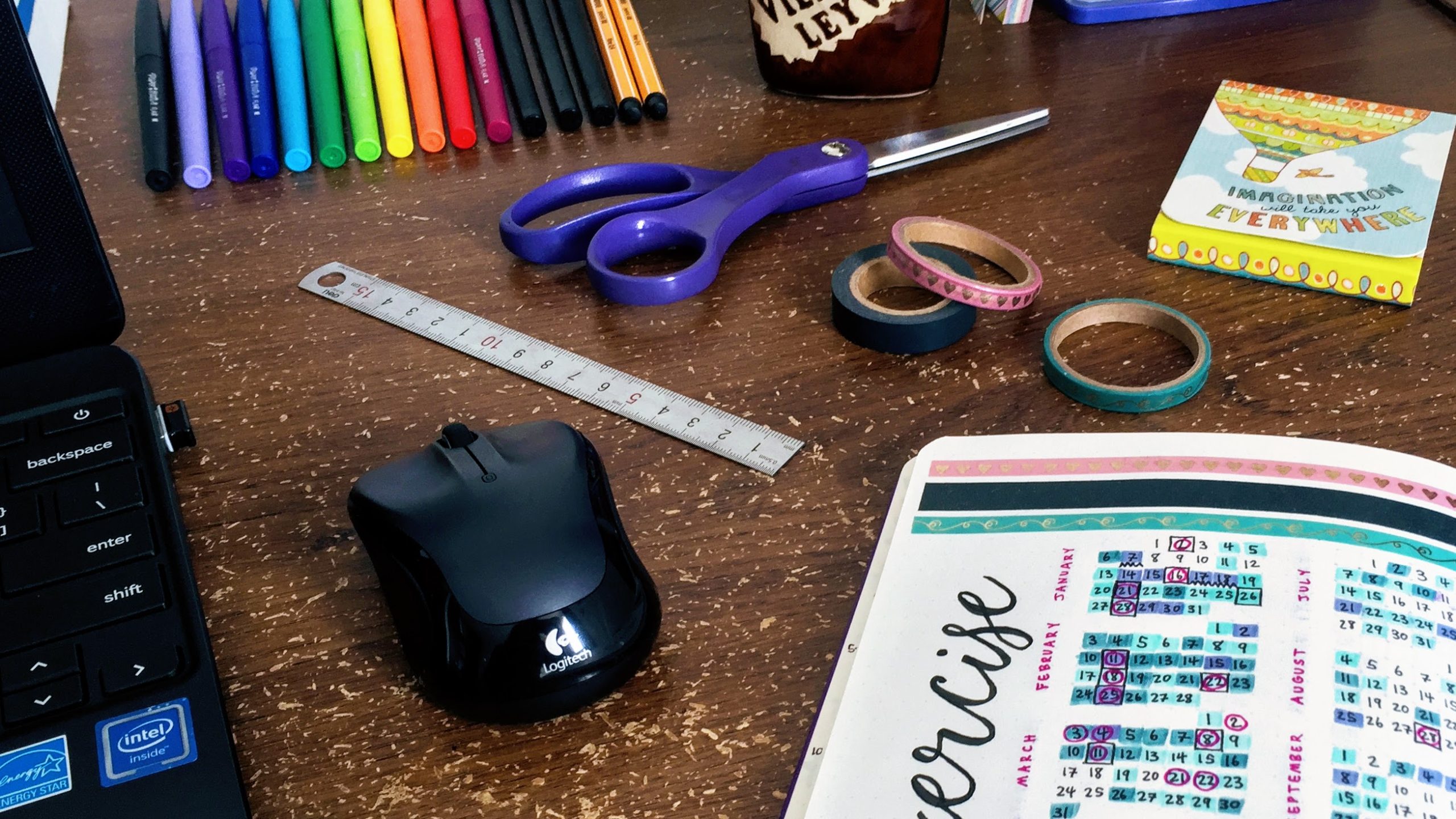
Have you tried this or a similar approach to organize your Bullet Journaling workspace? How did it go? Let me know in the comments below!
P.S. Save these ideas for later on Pinterest:
